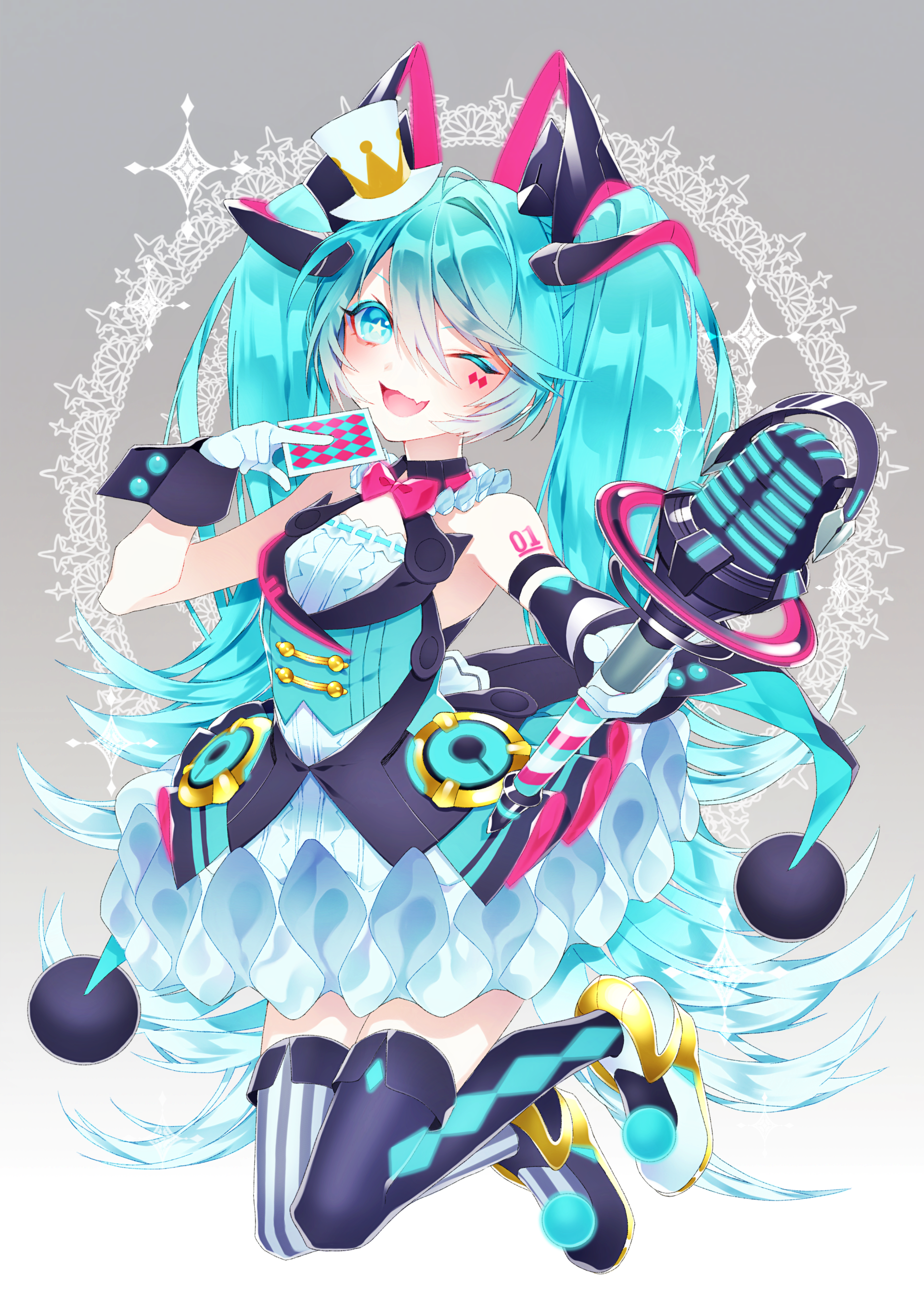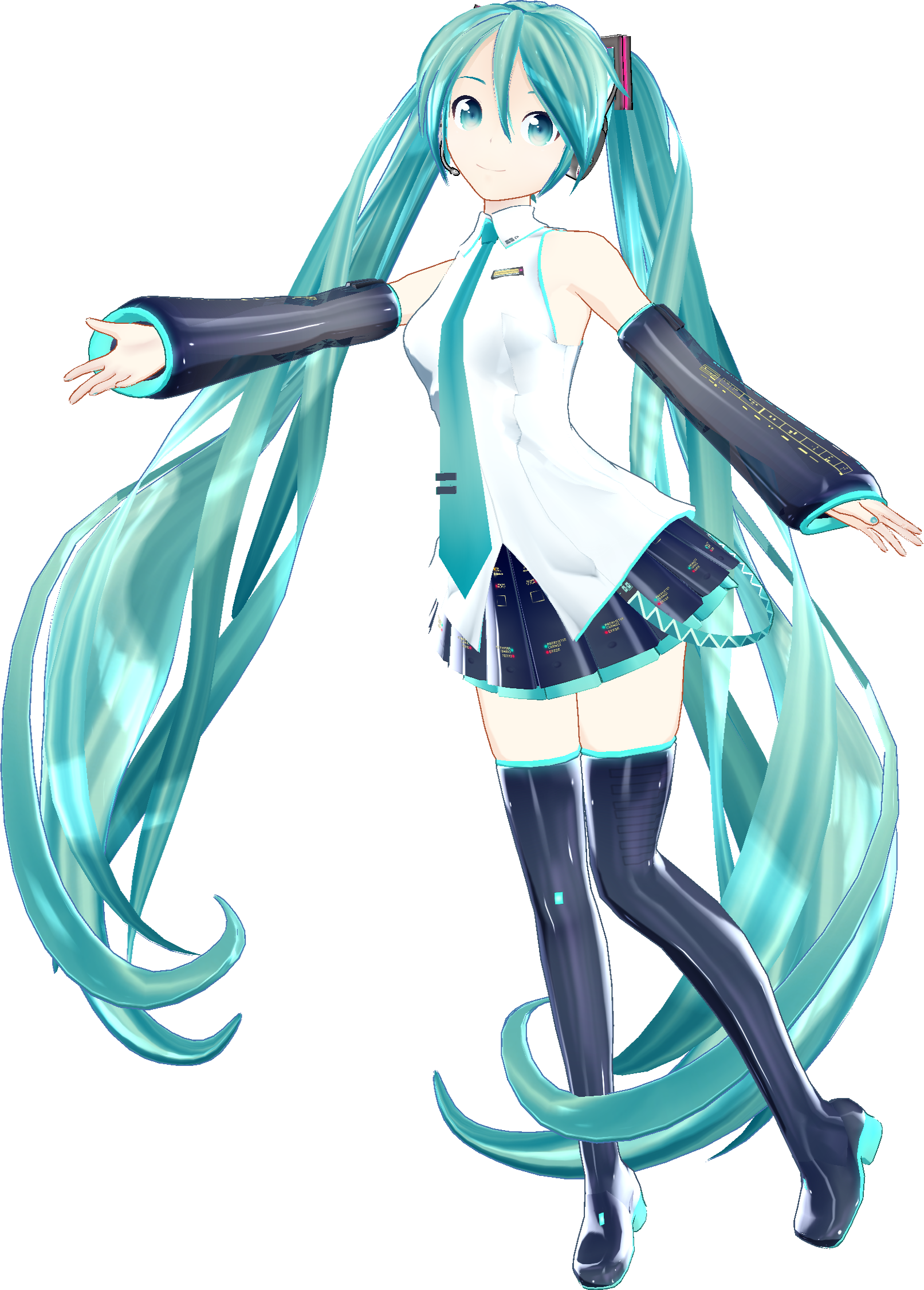

- Vocaloid hatsune miku append android#
- Vocaloid hatsune miku append software#
- Vocaloid hatsune miku append series#
Miku's initial marketing was similar to past software synthesizers and VOCALOID voicebanks, and was standard marketing for the software at her time of release. VOCALOID2 Hatsune Miku product that started it all On the tops of the frills are two small white circles that overlap each other, while the bottom of the frills feature an upside-down teal WiFi symbol.

Her shoes have been redesigned to a more traditional style of heels, and feature frills. She now sports a grey chain connected to her skirt, similar to the one on her V2 and V3 designs. The end of her skirt is now wavy and no longer features AT keyboard ports. Her skirt and sleeves appear to no longer feature the design of the DX-100 and DX-7. Mikus' tie has been redesigned completely, now being more ribbon-like. Her top no longer has the VOCALOID logo and instead has notes input into an interface replacing it. She sports two silver AT keyboard ports on her collar, like the ones on MEIKO's skirt on her V3 design. Her headphones have been completely redesigned, becoming primarily grey/silver, have a red stripe near the black padded ear cover, and sport a teal headband with black trim. The red stripes have been moved back into the ribbons, and the ribbons themselves are no longer part of her headphones. Her ribbons are no longer square shaped, and are instead round. Miku once again has "more hair", a change from V4X in which her pigtails were slimmer. The red stripes protrude outward from the hairpieces and extend upward, retaining their original square shape.įor Hatsune Miku NT, iXima significantly changed Miku's design. The ribbons became part of the headphones, and hold her pigtails in place by touching her hair.
Vocaloid hatsune miku append series#
For example, while Max Factory models show the uncensored version in their normal and Figma models, the Project Diva game series shy away from showing any exposure.įor Hatsune Miku V4X, iXima redesigned Miku's hairpieces. In many depictions, this bare strip of flesh is not shown and is covered. In the original design, there is a bare strip of flesh under the tie area. Her VOCALOID2 Append design is often subjected to censorship. This, along with KAITO's association with ice cream, started a discussion called "the Item War" within the VOCALOID fandom, where it became traditional for new VOCALOIDs to have an item assigned to them and the items were debated upon until one stuck via an Internet Meme. The ribbons are also reported by KEI to be the hardest item on the character's design for cosplayers to recreate.Īfter an internet meme involving Hachune Miku, Miku was associated with a spring onion (often mistaken for a leek due to the similar appearance). As seen in KEI's art for Miku, they are able to hold Miku's pigtails in place without having to physically touch the hair itself. The thin squares around her pigtails are futuristic ribbons made of a special material that floats in place. Part of her design is based on some of YAMAHA's keyboard models, particularly the DX-100 and the DX-7. The digital design on Miku's skirt and boots are based on synthesizer program colours, and the bars represent actual bars within the program, following Crypton's ideas. She now shares her twin tail distinction with other characters like Sailor Moon (who won best Twin Tails back in the 90s period). On June 22, 2012, Hatsune Miku's twin tails even earned her the title of the Twin Tail which best represented the 2000s, marking her the best set of Twin Tails from the dawn of the 21st century. Her pigtails have since become an iconic part of her design.

Miku was originally intended to have a different hairstyle, but after trying out pigtails, KEI thought they were more suitable. It took him more than a month to complete the commission. KEI said he could not create an image of a "singing computer" at first, as he did not even know what a "synthesizer" was. Crypton also provided KEI with Miku's detailed concepts, however, Crypton said it was not easy to explain what a "Vocaloid" was to him. When KEI illustrated Miku, he was given a color scheme to work with (based on the YAMAHA synthesizers' signature blue-green colour) and was asked to draw Miku as an android. Her name in Chinese is "Chūyīn Wèilái" (Simplified Chinese: 初音未来 Traditional Chinese: 初音未來). Her codename of "CV01" means "Character Vocal 01". It thus means "the first sound from the future." Her name was based on her concept of that when a sound is first spoken. The name was chosen by combining hatsu ( 初, "first"), ne ( 音, "sound"), and Miku ( 未来, a personal name that shares its spelling with the word for "future"). Her very first concept was of a bilingual Japanese and English vocal, but this later became the concept of Megurine Luka.
Vocaloid hatsune miku append android#
Crypton had the idea to release Miku as "an android diva in the near-future world where songs are lost."


 0 kommentar(er)
0 kommentar(er)
